#1 Tied Test 1 – Australia v West Indies, Brisbane, 1960-61
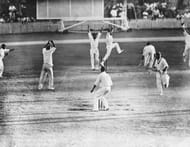
West Indies arrived in Australia under Frank Worrell without much fanfare. They were not really expected to trouble Richie Benaud’s powerful Australian outfit. The Caribbean entertainers, however, had a few aces up their sleeve including the extremely talented all-rounder Garry Sobers and the fearsome paceman Wes Hall.
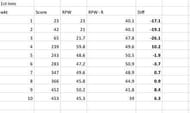
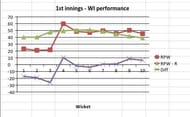
A closer look at the 1st innings (WI) suggests that they had a very ordinary start when compared to their record (post war matches considered in this case given that fewer games were played then) leading up to the Gabba Test. An excellent fourth-wicket stand gave them the impetus needed and lifted their RPW over the RPW-R for the first time. The RPW more or less stayed hovered around the RPW-R and eventually ended well above. This indicates that WI’s performance in the 1st innings was definitely above par.
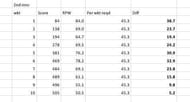
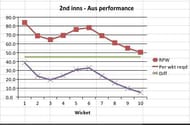
Australia, who required 45.3 runs per wicket to match the 1st innings total of WI, started off brightly and maintained an RPW that consistently stayed well above the required RPW. After a slight fall in the beginning, their RPW reached 78.2 (diff of 32.9) at the fall of the sixth wicket. A mini collapse after that meant that Australia did not quite consolidate their strong position. Nevertheless, with WI having to make up 5.2 runs per wicket, Australia were definitely in the ascendancy.
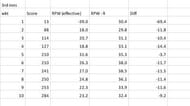
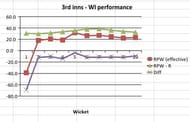
Rocked by quick and regular strikes, West Indies never quite got going in the 3rd innings. Their RPW (effective) was well behind the RPW – R throughout the innings. But for a brief period in the middle (5th wicket), where they were almost on par with their 3rd innings record, the visitors were unable to churn out a performance that would lead them to a competitive target. Or so, it seemed.
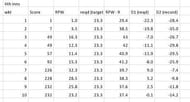
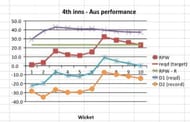
In the final innings, Australia required 233 (RPW required 23.3). Given their 4th innings record (RPW-R) in the years before the game, this seemed like a stroll in the park. However, what transpired was something totally different. Australia fell way behind right from the beginning with both D1 and D2 extremely low (negative double digit). The famous 7th wicket stand between Benaud and Alan Davidson rescued the hosts and moved D1 to 9.0 but D2 was still negative.
This indicates that Australia might have had the upper hand at that moment but were performing below the level they had leading up to the game. The burst of wickets in the end (last over) meant that D1 fell away once again leaving the classic game tied. It is interesting to observe that both teams batted much better than they were expected to in the first innings and much poorer in the second innings than their records suggested. This humdinger, then, could be regarded as a game of two halves (innings).
Looking for fast live cricket scores? Download CricRocket and get fast score updates, top-notch commentary in-depth match stats & much more! 🚀☄️